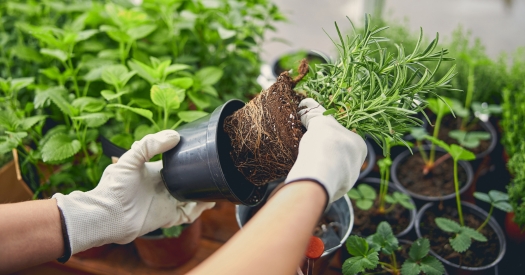
In the world of horticulture, nursery containers play a crucial role in the growth and development of plants. These containers, often overlooked, are the unsung heroes in the journey from seed to sapling and beyond. This article explores the importance of nursery containers, their various types, and how they contribute to successful gardening and landscaping.
The Importance Of Nursery Containers
Nursery containers serve several essential functions that directly impact plant health and growth. Firstly, they provide a controlled environment for young plants, allowing for optimal conditions that may not be present in natural settings. Containers help regulate moisture levels, temperature, and nutrient availability, ensuring that plants receive the necessary care as they grow.
Moreover, nursery containers facilitate easier management and transportation of plants. Whether in commercial nurseries or home gardens, these containers allow for mobility and organization, enabling gardeners to rearrange their plant displays easily or transport plants to different locations. This flexibility is particularly valuable in urban gardening, where space is often limited.
Types Of Nursery Containers
When it comes to nursery containers, there is a wide variety to choose from, each designed to meet specific needs. Here are some common types:
Plastic Containers
Plastic containers are among the most popular choices for nursery use due to their lightweight nature, durability, and affordability. They are available in various sizes and shapes, making them suitable for a range of plants, from small herbs to larger shrubs. Additionally, plastic containers can retain moisture, reducing the need for frequent watering.
Clay And Terracotta Pots
Clay and terracotta pots have been used for centuries and are favored for their natural aesthetic and breathability. These materials allow for air circulation, which promotes healthy root development. However, they tend to dry out more quickly than plastic containers, requiring more frequent watering. This makes them ideal for plants that prefer drier conditions.
Biodegradable Containers
Biodegradable containers, often made from materials like coconut coir or recycled paper, are gaining popularity among environmentally conscious gardeners. These containers decompose over time, reducing waste and providing nutrients to the soil as they break down. They are an excellent choice for eco-friendly gardening practices.
Grow Bags
Grow bags, made from breathable fabric, are another innovative option for plant cultivation. They offer excellent drainage and aeration, promoting healthy root growth. Grow bags are particularly beneficial for growing vegetables and herbs, as they allow roots to develop without becoming root-bound, a common issue with traditional pots.
Hanging Baskets
For those looking to maximize vertical space, hanging baskets are an excellent solution. These containers can hold a variety of flowering plants and herbs, adding beauty to patios, balconies, and gardens. They require careful attention to watering, as they can dry out faster than other container types.
Factors To Consider When Choosing Nursery Containers
When selecting nursery containers for your plants, several factors should be taken into account:
Plant Type
Different plants have varying needs when it comes to container size, drainage, and soil requirements. Consider the mature size of the plant and its root system when choosing a container. Larger plants will require more space to grow, while smaller plants may thrive in compact containers.
Drainage
Waterlogging can result in root rot, thus proper drainage is crucial. Ensure that the nursery containers you choose have adequate drainage holes. If using containers without holes, consider adding a layer of gravel or using a potting mix designed for moisture retention.
Material
The material of the nursery container affects its weight, durability, and insulation properties. While clay and terracotta pots offer a more conventional appearance and breathability, plastic containers are lightweight and manageable. Choose a material that fits your gardening style and the specific needs of your plants.
Climate
Consider your local climate when selecting nursery containers. In hot and dry regions, containers that retain moisture may be beneficial, while in cooler climates, pots that provide insulation against frost may be more suitable.
Aesthetics
While functionality is crucial, the visual appeal of nursery containers should not be overlooked. Choose containers that complement your garden’s design and enhance the overall aesthetic. Color, texture, and style can significantly impact the look of your gardening space.
Conclusion
Understanding nursery containers is fundamental to fostering healthy plants and successful gardening practices. Gardeners can provide a nourishing environment for their plants by choosing the appropriate containers and taking into account elements like plant kind, drainage, material, climate, and aesthetics. Ultimately, the right nursery containers lay the foundation for thriving plants, whether in a professional nursery or a home garden. As you embark on your gardening journey, remember that the right container can make all the difference in helping your plants flourish.


